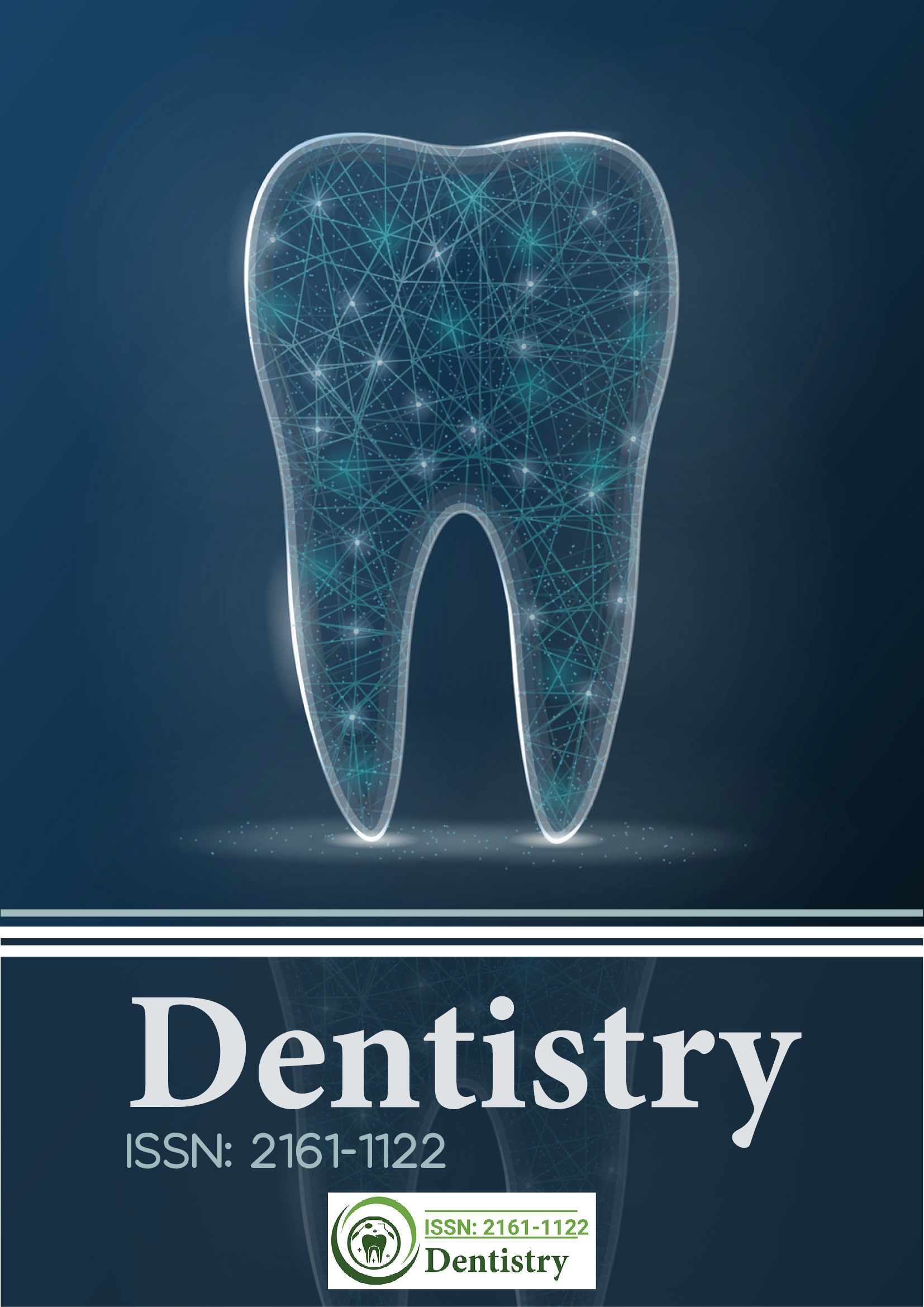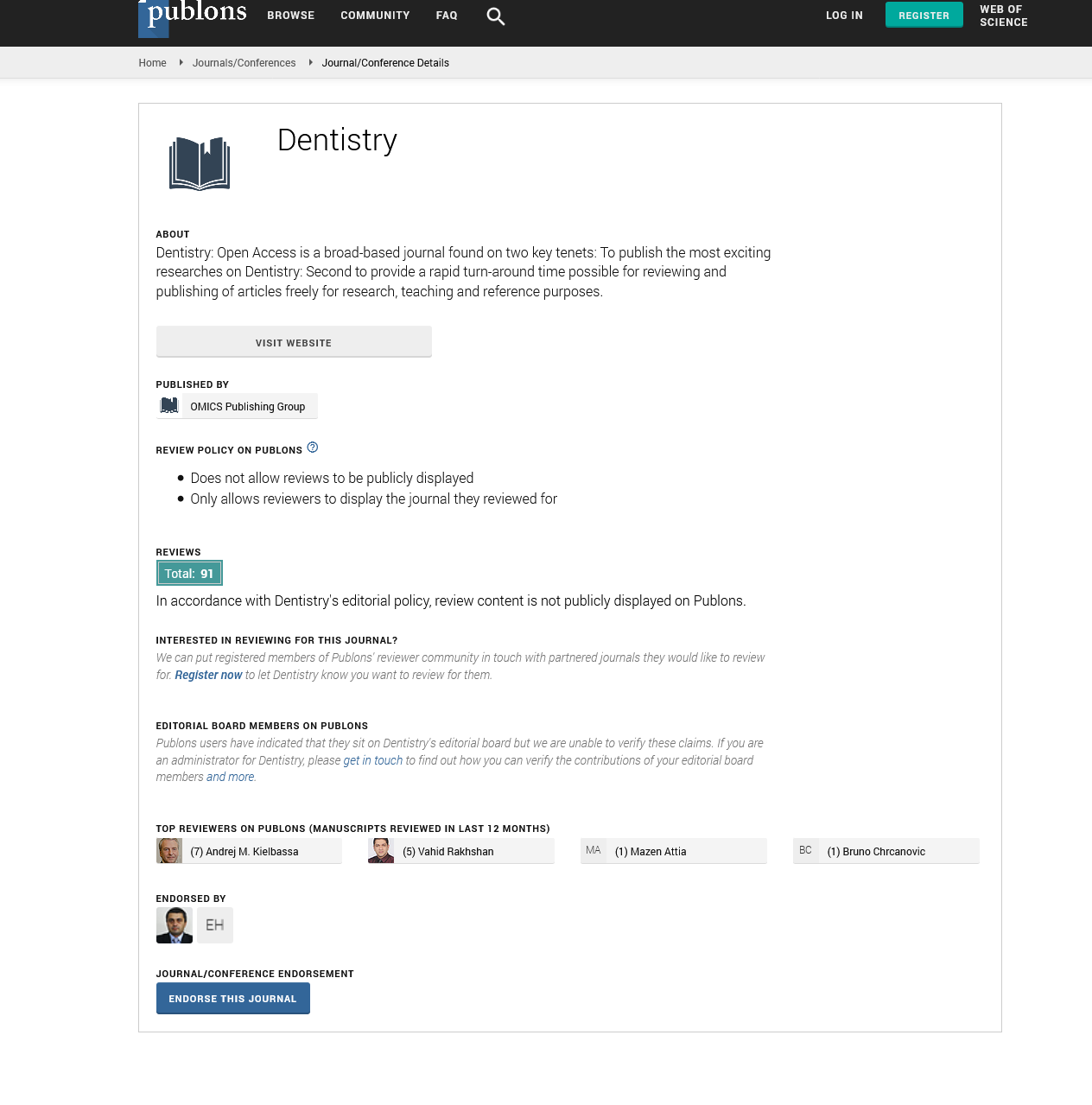Citations : 2345
Dentistry received 2345 citations as per Google Scholar report
Indexed In
- Genamics JournalSeek
- JournalTOCs
- CiteFactor
- Ulrich's Periodicals Directory
- RefSeek
- Hamdard University
- EBSCO A-Z
- Directory of Abstract Indexing for Journals
- OCLC- WorldCat
- Publons
- Geneva Foundation for Medical Education and Research
- Euro Pub
- Google Scholar
Useful Links
Share This Page
Journal Flyer

Open Access Journals
- Agri and Aquaculture
- Biochemistry
- Bioinformatics & Systems Biology
- Business & Management
- Chemistry
- Clinical Sciences
- Engineering
- Food & Nutrition
- General Science
- Genetics & Molecular Biology
- Immunology & Microbiology
- Medical Sciences
- Neuroscience & Psychology
- Nursing & Health Care
- Pharmaceutical Sciences
Relationship between cervical column morphology and skeletal deep bite
International Conference on Dental & Oral Health
August 19-21, 2013 Embassy Suites Las Vegas, NV, USA
Leyli Sadri
Accepted Abstracts: Dentistry
Abstract:
Aim: Cervical column morphology is related to head posture which is associated with craniofacial morphology and mandibular rotation pattern. Studies have shown connection between cervical column fusions and facial morphology. Since skeletal deep bite leads to many aesthetic and functional problems including respiratory and swallowing difficulties, and TMJ and facial pains, early diagnosis and treatment is critical to prevent above mentioned problems. This study aimed to compare the cervical column morphology in adults with skeletal deep bite and the control group with normal occlusion and craniofacial morphology. Methods: In this case?control study, 25 deep bite patients (17 females and 8 males,17?30 years old) were compared with 25 controls (16 females and 9 males,17?30 years old). Angular measurements of craniofacial and cervical column dimensions were performed on lateral cephalograms. Anomalies of cervical column including fusion and arch deficiency were assessed. Jarabak index, ANB, SN-MP, and MM angles were also assessed. Data were analyzed by Chi Square and Fisher?s Exact Tests using SPSS software. Results: In the deep bite group, 72% had cervical column fusion which was significantly more than the control group in which 32% had fusion (p<0.001). Fusions in control group were between C2 and C3. However, fusions in deep bite individuals were observed in C2-C3, C3-C4, and C4-C5 sites. Conclusions: Skeletal deep bite and cervical column deviations are evidently associated, and most significant deviation in cervical vertebrae was observed in C2-C3 intervertebral space. This observation is useful in prevention and early treatment of related problems

